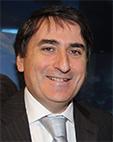PHILIPPE ROBARDEY
SOGECLAIR - Medef 31
Philippe ROBARDEY est Président Directeur Général de SOGECLAIR, groupe international d’ingénierie offrant :
- des services d’ingénierie tels que aérostructure, installation des systèmes, gestion de configuration, équipements, manufacturing engineering, pour l’industrie aérospatiale,
- des produits technologiques tels que éléments d’aérostructure, véhicules de mission pour la Défense, simulateurs et logiciels de simulation pour le transport terrestre et l’aérien.
Né le 14 octobre 1959 à Toulouse, dans une famille de culture entrepreneuriale depuis 3 générations, il s’est marié en 1983 et a 2 fils de 27 et 23 ans.
Après des études de gestion à l’Ecole Supérieure de Gestion à Paris et une première expérience dans le secteur de l’électronique grand public, il rejoint, en 1984, l’entreprise créée par ses parents.
Depuis 29 ans, il a occupé des fonctions d’Ingénieur Commercial, de Directeur de Business Unit, de Directeur Commercial, puis de Directeur Général.
Après la crise profonde traversée par l’Entreprise au début des années 1990, il a mené :
- en 1993-1995, un plan de restructuration de l’Entreprise,
- en 1998, l’introduction sur le Second Marché de la Bourse de Paris (EuroNext).
- depuis 15 ans, l’internationalisation de l’Entreprise qui réalise environ 40% de son chiffre d’affaires à l’international.
En 2003, il succède à son père à la Présidence de SOGECLAIR.
Depuis 2008, il préside le MEDEF de la Haute Garonne.
En 2008, il est nommé au Conseil Consultatif de la Banque de France Midi-Pyrénées, en 2009 il est nommé administrateur et Président du Comité d’investissement de la société de capital-risque IRDI.
Depuis 2007, il participe et anime les travaux du Club l’Atelier dédié à l’aéronautique au sein du CEPS.
Aujourd’hui SOGECLAIR, grâce au talent de ses 1100 collaborateurs, est un groupe solide, implanté dans 5 pays : France, Allemagne, Espagne, Royaume-Uni et Tunisie.
Engineering services Strategy and perspectives
SOGECLAIR is an international Engineering Services Company, dedicated to Aerospace industry with more than 1000 engineers in France, Germany, Spain, United Kingdom, Tunisia, the Netherlands and recently in Canada.
Over the 30 last years, the European Engineering services sector has been structured by a continuously growing market.
The demand was driven by :
- technologies and innovations
- externalisation processes.
In the meantime, the power of decision has moved from Technics to Procurement in the most demanding companies –automotive, aeronautics, telecom, energy…
As a consequence of this major change in decision makers profile and objectives, the market has benefit to “commodity offering” companies. During that period, price and large spectrum of services were a key factor of success.
As the French market was ahead in these transformations, French suppliers have been in advance on the market through the development of « Power by the hour » companies with multicompetencies strategy.
Those companies supported by « general procurement accreditation processes » have conducted their development around key elements of which we can underline :
- operational principles such :
- Recruitment and turn over policy, in order to maintain the cost with mainly young engineers offshore (understand low cost) was becoming an element for cost reduction
- Planning KPI’s such as « intercontracts » or « occupation rates ».
- external growth at international level
Since a few years (3 to 5) customers needs expression has changed and in order to move from means to results expectation, their demand has been more and more oriented to solution suppliers with work packages.
The business model slowly moved from Human Resources companies to real Engineering companies.
At this point of time, the Engineering services providers leaders started to meet customer expectation with « window dressing work packages » and Technics started their come back in decision making within customers organisations.
As my knowledge of the market is mainly concentrated on the aerospace sector, the following part of my presentation will be focused on this sector, analysing both customer and provider sides.
From customer side R & D is never an objective but an investment driven by technology/innovation and competition.
This investment represents a cost and affects their EBIT so that reducing R & D on a short term perspective will increase profitability or competitiveness.
On the other hand the R & D capability is key factor of success on a long term period in order to keep the necessary know-how to restart a new cycle of product development. Loosing this know-how would drastically affect cost and efficiency as it happened to certain actors in the russian industry.
The outcome of new OEM in Asia and new competition in Canada, Russia, …, makes R & D capability major for the existing aircraft manufacturers future.
Nevertheless at Airbus and Boeing duopole the range of products is almost completed and new technology break will only occur with new engine generation. These will not be available before an average of 10 years.
ð R & D policy will then be driven by know-how and capability preservation and this will drastically affect the A/C manufacturers expectation from their engineering providers.
Engineering services will have to address those new needs and modify their models from :
Engineers quantity availability and multi applications such as :
- aerostructure
- electronics
- Software (embedded and tech data management)
- documentation , technical publication
- systems (mechanical / electrical)
- systems installation
- manufacturing engineering
- project management
- quality
- process
- information systems
- certification
- tooling
- logistics
- prototyping
and even out of the scope teams such as businesss controllers …
To :
- real capitalization of expertise
- innovation availability
by such allowing customers to secure their know-how, over the time coming.
This would conduct a huge reduction in commodity providers and a clear technical policy by increasing cooperation with experts and specialists involved in the heart of customers know-how. Public and industrial policies will most probably sustain those actors who are able to address this new demand.
For such engineering actors will have to adapt their organisation and business models to remain on the market. This will significantly affect :
- Manager profiles
- Information systems
- KPI’s and project monitoring
- HR policy (turn over, wages)
- BU organisation
- Quality organisation
- IP Profile
- External growth policy…
SOGECLAIR is now ahead this transformation by having made almost 15 years ago the choice to focus on limited applications such as :
- Structure
- Systems installation
- Configuration management
And more recently
- Manufacturing engineering
By offering result oriented contracts from:
- Work packages
- Design and build (in cooperation with manufacturers)
- Up to risk sharing partnership
By investing in innovation either on customer product, or on new technology.
We beleive that the choice of a long term and in depth strategy will sustain our growth for the future.




